Was Machu Picchu “Discovered” & Looted 43 Years Before Hiram Bingham’s Arrival? (Part 2)
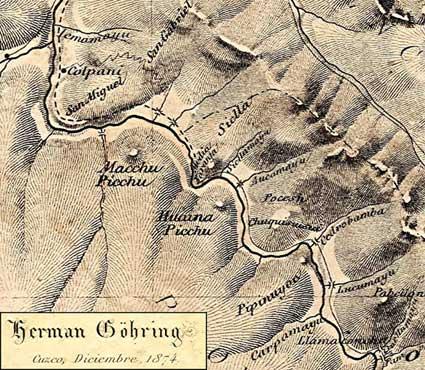
(At left: The American Paolo Greer discovered this map of the Machu Picchu area in Lima’s National Library. It was in an 1877 book by the German geologist, Herman Göhring. The map is dated 1874 and clearly indicates two peaks: “Macchu Picchu” and “Huaina Picchu,” although no accompanying ruins are indicated.)
Machu Picchu Before Bingham (Part 2)
By Paolo Greer
South American Explorer Magazine
Edition 87
June 2008
The Oldest Map of Machu Picchu
In 1989, I was granted an interview with Juan Mejía Baca, the Director of the National Library of Perú. I had spent many weeks in the library and had finally worked up my courage to make a few suggestions to Don Juan about how he might make his archives more accessible.
(more…)
Was Machu Picchu “Discovered” & Looted 43 Years Before Hiram Bingham’s Arrival? (Part 1)
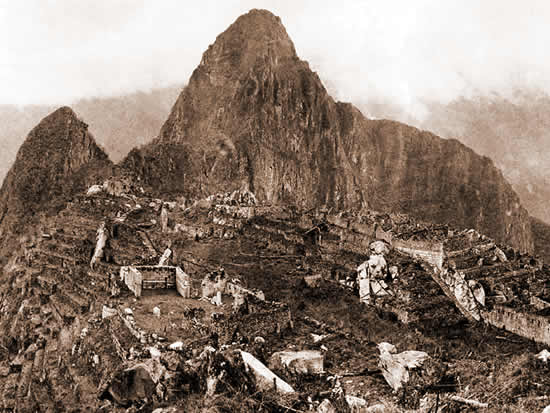
(Above: Machu Picchu in 1912; Photo by Hiram Bingham III)
Note: Recently there has surfaced in the press the announcement that a German adventurer/businessman, Augusto R. Berns, actually discovered Machu Picchu (and looted it with the permission of the Peruvian government at the time) some four decades before the American historian, Hiram Bingham, stumbled upon the ruins in 1911 and officially “discovered” them. The press reports promised that the man making this claim, the American Paolo Greer, would soon publish his proof in the “South American Explorer Magazine.” Greer’s article has just been published and Part I is reprinted in full below.
(more…)
Inca Skull With 16th Century Conquistador Bullet Hole Discovered in Peru
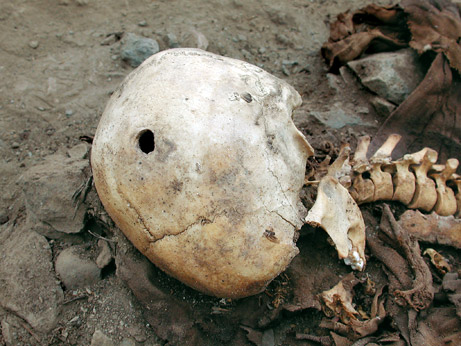
First Known Gunshot Victim in Americas Discovered
National Geographic News
June 19, 2007
The first known gunshot victim in the Americas was an Inca Indian killed by a musket-wielding Spaniard nearly 500 years ago in Peru, scientists announced today.
The casualty’s skeleton was discovered in 2004 while excavating an Inca cemetery in the Lima suburb of Puruchuco—less than a mile from thousands of Inca mummy bundles discovered by Peruvian archaeologist Guillermo Cock.
The individual may have been killed during an Inca uprising against Spanish conquistadors in 1536, according to Cock, who also led the new excavations.
(more…)
Skull Surgery Among the Incas
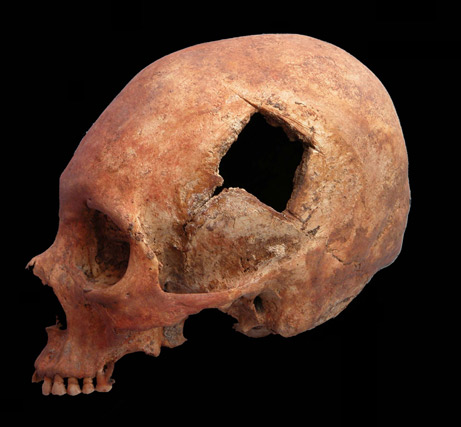
Incan Skull Surgery
Science News
April 25th, 2008
When Incan healers scraped or cut a hunk of bone out of a person’s head, they meant business. Practitioners of this technique, known as trepanation, demonstrated great skill more than 500 years ago in treating warriors’ head wounds and possibly other medical problems, rarely causing infections or killing their patients, two anthropologists find.
Trepanation emerged as a promising but dangerous medical procedure by about 1,000 years ago in small communities near the eventual Inca heartland in Peru’s Andes mountains, say Valerie Andrushko of Southern Connecticut State University in New Haven and John Verano of Tulane University in New Orleans. Incan healers later mastered certain trepanation methods, performing them safely and frequently.
“Far from the idea of ‘savages’ drilling crude holes in skulls to release evil spirits, these ancient people were highly skilled as surgeons,” Andrushko says…
(more…)
Saving the Incas’ Mother Tongue, Quechua
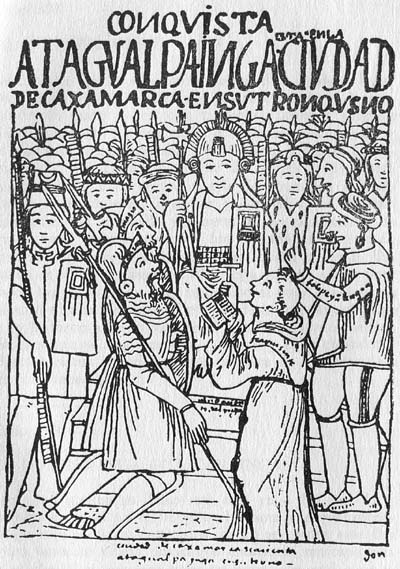
June 7, 2008
Armed With a Pen, and Ready to Save the Incas’ Mother Tongue
NYT
CALLAO, Peru
“Somewhere in La Mancha, in a place whose name I do not care to remember, a gentleman lived not long ago.”
Simple enough, right? But not for Demetrio Túpac Yupanqui.
Instead, he regales visitors to his home here in this gritty port city on Lima’s edge with his Quechua version of the opening words of “Don Quixote”:
“Huh k’iti, la Mancha llahta suyupin, mana yuyarina markapin, yaqa kay watakuna kama, huh axllasqa wiraqucha.”
(Above: A 16th century drawing of Francisco Pizarro meeting the Inca emperor Atahualpa, in Cajamarca, Peru in 1532)
Mr. Túpac Yupanqui, theologian, professor, adviser to presidents and, now, at the sunset of his long life, a groundbreaking translator of Cervantes, greets the perplexed reactions to these words with a wide smile.
“When people communicate in Quechua, they glow,” said Mr. Túpac Yupanqui, who at 85 still appears before his pupils each day in a tailored dark suit. “It is a language that persists five centuries after the conquistadors arrived. We cannot let it die…”
(more…)
German May Have Looted Machu Picchu Long Before Hiram Bingham Arrived
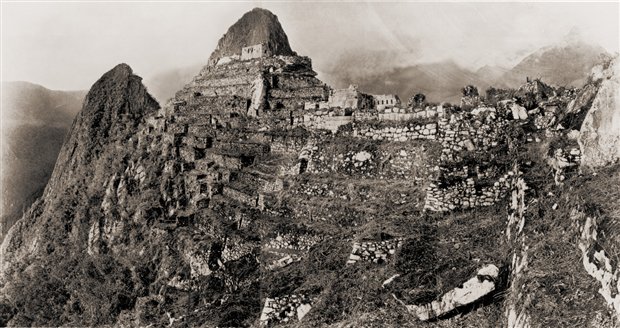
Machu Picchu
German may have found, looted Inca city
June 5, 2008
Newscientist.com
LIMA, Peru — The jungle-shrouded Inca citadel of Machu Picchu may have been rediscovered – and looted – decades before the Yale scholar credited with the find first got there, a researcher said Thursday.
Most academics say Yale University’s Hiram Bingham III rediscovered the site in Peru’s verdant southeastern Andes during a 1911 expedition.
But Paolo Greer, a retired Alaska oil pipeline foreman, says otherwise. Thirty years of digging through files in the United States and Peru led him to maps and documents showing that a German businessman named Augusto R. Berns got there first…
(more…)
Saqsaywaman: The Last Days of the Incas’ Peru Tour #11
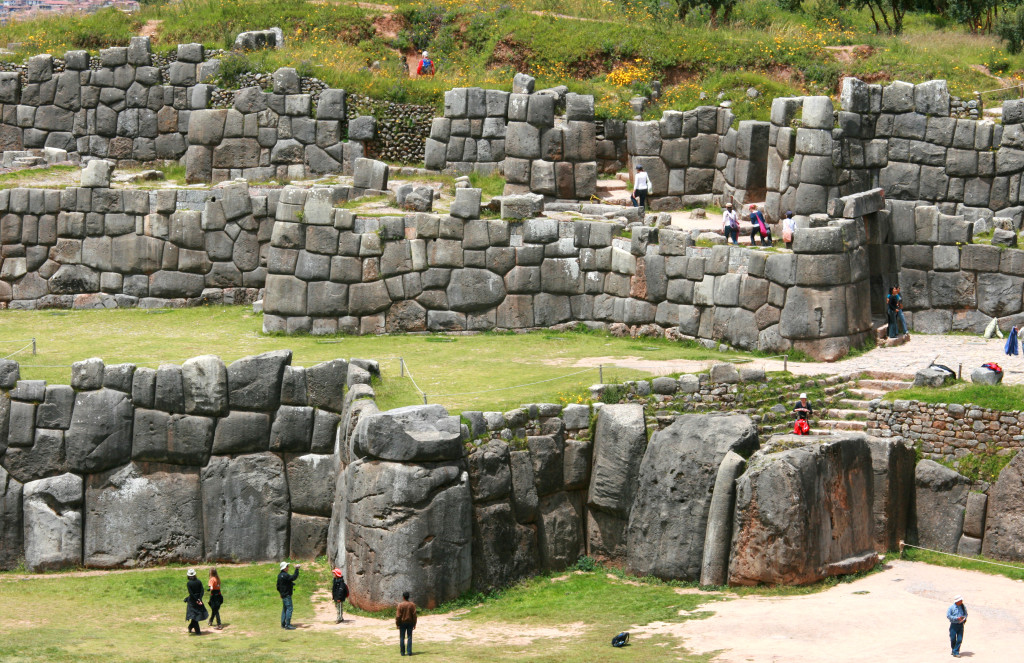
The Inca Ruins of Saqsaywaman
Cusco (3-4 Days)
Visiting the Inca Ruins of Saqsaywaman
When the Inca emperor Manco Inca rose up against Francisco Pizarro and his men in 1536, the emperor at first escaped from the city, then returned with several hundred thousand Inca warriors who trapped the 190 Spaniards within two small buildings on Cusco’s main square. Francisco Pizarro was in Lima at the time leaving three of his brothers—Hernando, Juan, and Gonzalo—in charge of the city. Thoroughly unnerved by the massive size and scale of the rebellion, the three brothers decided that the Spaniards’ only chance was to break out of the city and to somehow capture the massive Inca ceremonial center of Saqsaywaman, now being used as a fortress, that loomed above. Saqsaywaman, it turned out, was the key to capturing the Inca’s capital.
Quoting from Chapter 9 of The Last Days of the Incas:
“Conferring with Manco’s cousin Pasac, who had sided with the Spaniards, Juan and Hernando [Pizarro] decided that the only way to attempt storming the fortress of Saqsaywaman was to first somehow break through the legions of warriors to the north of the city, gaining the road that led to Jauja, and then, if successful, to wheel about and ride east around the hills until they reached the grassy plain fronting the fortress. Once there, the Spaniards would have to somehow launch a frontal assault against the Incas’ colossal walls. To many of those who listened to the plan, the mission seemed suicidal. Still, unless they were somehow able to seize the initiative, all realized that they were doomed to remain in the city and to gradually be worn down by attrition. With the grace of God, thought some, the desperate plan just might work…
(more…)
The Last Days of the Incas’ Peru Tour #10 (Cusco)
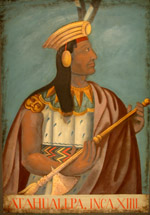
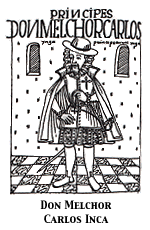
Cusco (3-4 Days)
Visiting The Cora Cora
To the north and uphill from the Plaza de Armas runs Suecia Street. At its base and reaching the plaza once stood the Cora Cora, which was the palace of Sinchi Roca, an early Inca king. During Manco Inca’s uprising, his warriors seized the area around Cora Cora, and from it rained down sling stones and arrows against the conquistadors, who were holed up next to what is now the Cathedral. Although the palace is not visible from the street, if you go into any of the courtyards or restaurants along Calle Suecia, you can still see one of the massive stone walls that made up the palace (have lunch in the Gaucho Grill, for example, whose massive rear wall is actually a 500-year-old palace wall).
Visiting the Church of Paullu Inca, Manco Inca’s Brother
If you continue up Suecia Street from the Cora Cora, then turn right and head up a parallel street further up the hill, called Resbalosa, you’ll come to San Cristóbal Church, which sits on a promontory that overlooks Cusco. The church was built by Paullu Inca, Atahualpa’s youngest brother and the brother of Manco Inca, the great Inca rebel emperor who fought a protracted war against the Spanish and nearly won…
(more…)
The Last Days of the Incas’ Peru Tour #9 (Cusco)
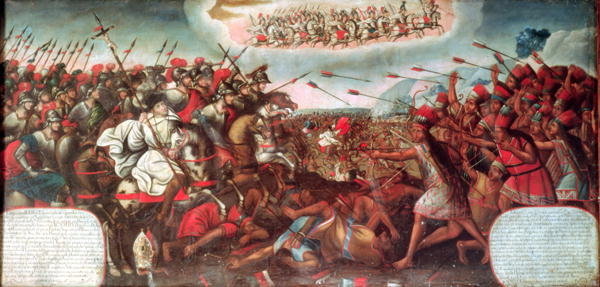
The Last Days Of The Incas Battle Scene
Cusco (3-4 Days)
Visiting La Merced Monastery and Church
(Burial site of Diego de Almagro Sr, Diego de Almagro Jr, and Gonzalo Pizarro. Repository of the painting (above) that adorns the cover of The Last Days of the Incas)
Just a block to the southwest of the Plaza de Armas (which makes three major churches in a three-block radius!) lies La Merced Monastery and Church, begun in 1534 and rebuilt in the late 17th century. The monastery (to the left of the church) is one of the little-known jewels of Cusco and is beautifully designed around a central garden and courtyard. The arcades around the garden are surprisingly hung with a large number of “Cusco-school”-style paintings of very high quality. The first painting on the left, in fact, as you enter the monastery, is the same painting that adorns the (U.S. and Canadian version) cover of The Last Days of the Incas. It actually depicts armored Spaniards on horseback fighting the fierce Araucanian Indians in central Chile, who resisted Spanish attempts to conquer them for centuries. On one of the horses rides a white-robed Mercedarian friar carrying a lance–one end of which bears a metal crucifix. Above him, the Spanish patron Saint Santiago, whom the Spaniards often invoked during their pitched battles against various natives in South America, is performing a miracle—turning the Araucanians’ arrows back upon themselves. On the far side of the cloister you’ll find a small art museum. Within it (and outside on the cloister’s walls) is the best collection of Cusco-school paintings in the world…
(more…)
The Last Days of the Incas’ Peru Tour #8 (Cusco)
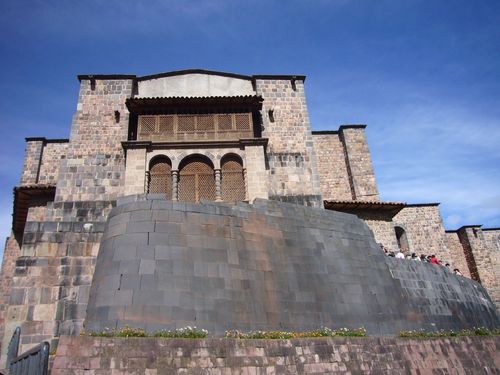
Cusco (3-4 Days)
Visiting the Qoricancha, or Inca Temple of the Sun
Two long blocks southeast of Cusco’s Plaza de Armas stands the church of Santo Domingo and below it, the Inca’s most sacred temple, the Qoricancha, or temple of the sun. When the first three Spaniards Pizarro had sent to Cusco arrived, they found the Incas’ sun temple gleaming literally like gold. With Pizarro still holding the Inca emperor Atahualpa hostage in northern Peru, the Inca general in charge of the city, General Quisquis, found himself forced to comply with Atahualpa’s orders to help the three Spaniards loot gold and silver from the capital.
Quoting from Chapter 5 of The Last Days of the Incas:
“What had really caught the trio’s attention, however, from the moment they had looked down upon the capital after crossing the final crest of hills, were certain buildings that seemed to burn as brightly as the sun, as if the buildings themselves had been dipped into a golden fire. After some investigation, they discovered that, sure enough, “These buildings were sheathed on the side where the sun rises with large plates of gold…They said there was so much gold in all the buildings of the city that it was a marvelous thing…[and that] they would have brought much more of it if this would not have detained them longer, because they were alone and over 250 leagues from the other Christians….”
(more…)











